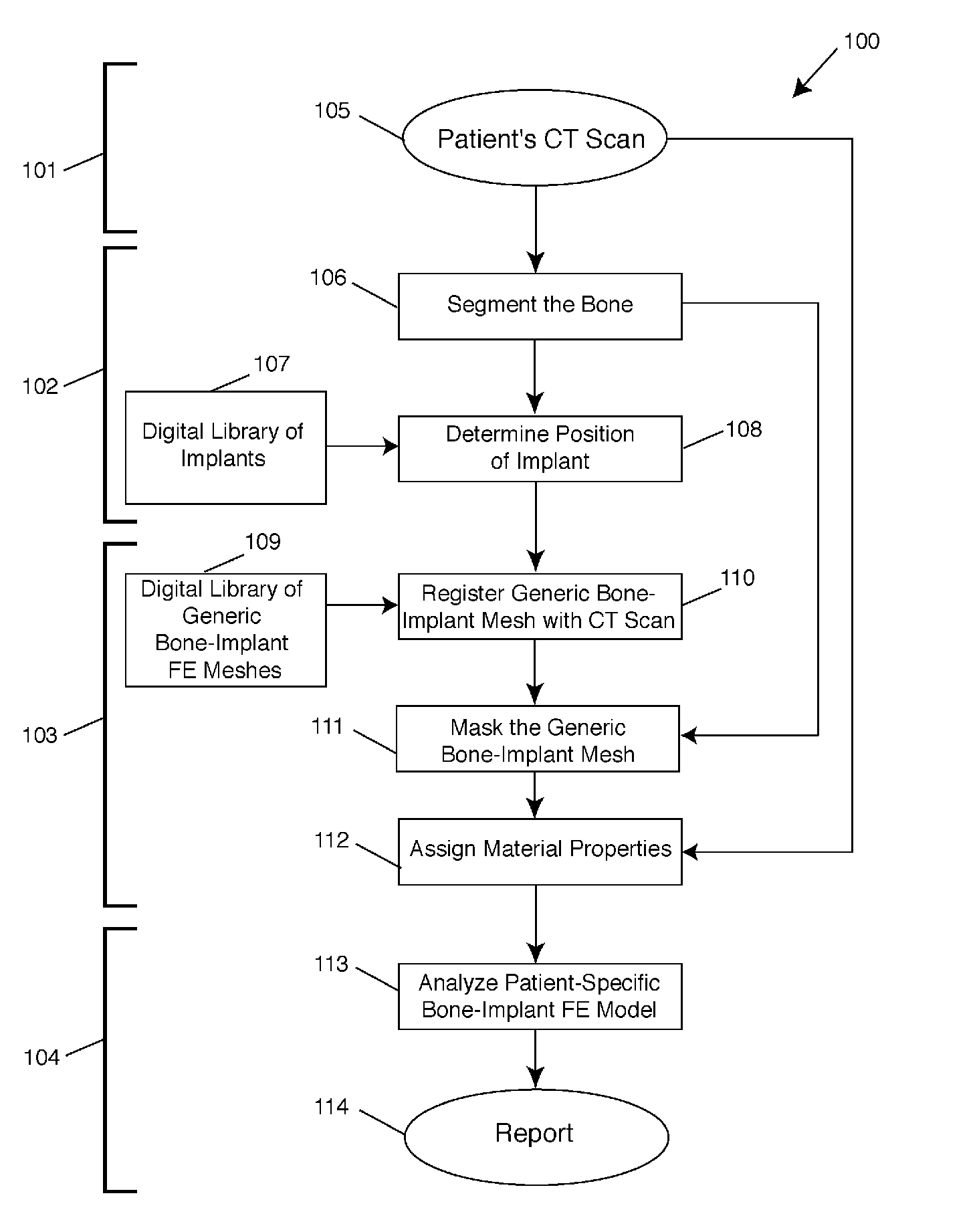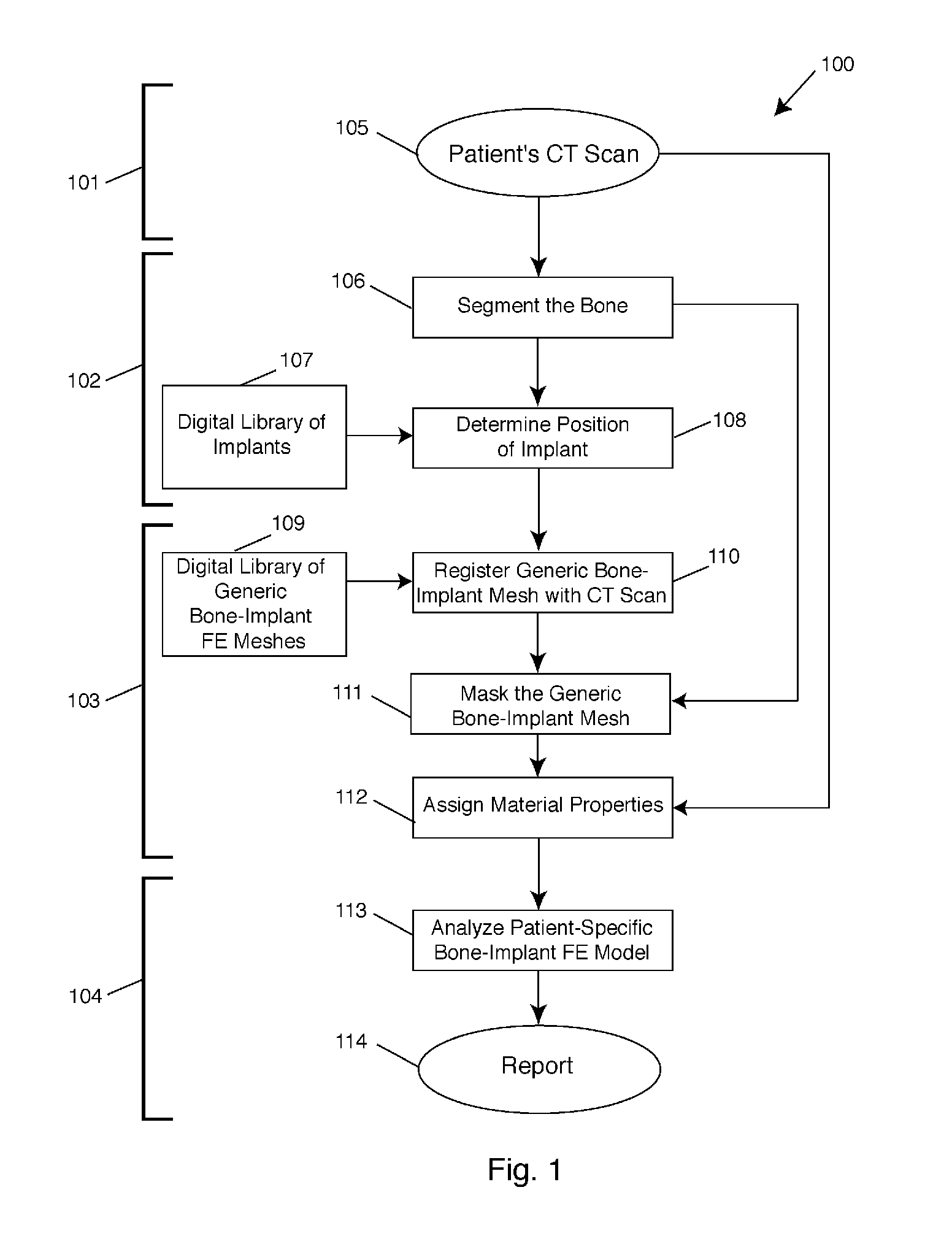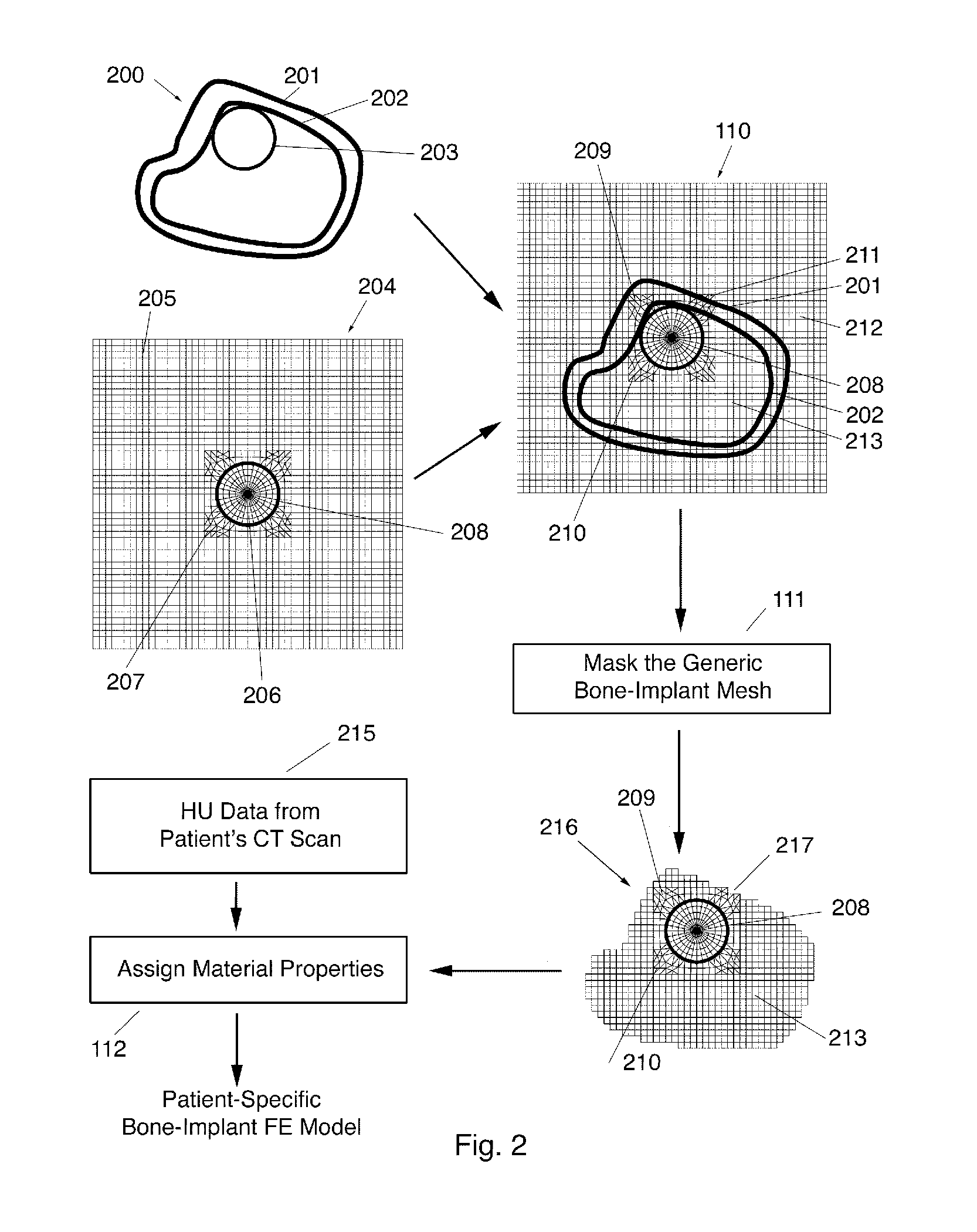Automated patient-specific bone-implant biomechanical analysis
a biomechanical analysis and patient technology, applied in the field of orthopaedic surgical planning, can solve the problems of inability to analyze sometimes failing or loosening of implants, and inability to apply techniques to more than a few bones, etc., to achieve smooth deformation and facilitate use.
- Summary
- Abstract
- Description
- Claims
- Application Information
AI Technical Summary
Benefits of technology
Problems solved by technology
Method used
Image
Examples
Embodiment Construction
[0036]The present invention relates to surgical planning using a fully automated method of finite element modeling of bone-implant systems. The present invention may be used in a variety of clinical surgical planning applications, including but not limited to hip, spine, or knee surgery, total joint replacement, spinal fusion, pedicle screw fixation, and fracture fixation. While applicable to any clinical imaging modality—MRI, DXA, or X-rays—and to any bone-implant system, the technique is described in detail below for use with CT scans. In the following description, numerous specific details are set forth in order to provide a thorough understanding of the present invention. It will be apparent, however, to one skilled in the art, that the present invention may be practiced without some or all of these specified details and may be applied to any medical imaging modality and to any bone-implant system in which a goal is to perform a biomechanical analysis of such bone-implant system...
PUM
 Login to View More
Login to View More Abstract
Description
Claims
Application Information
 Login to View More
Login to View More - R&D
- Intellectual Property
- Life Sciences
- Materials
- Tech Scout
- Unparalleled Data Quality
- Higher Quality Content
- 60% Fewer Hallucinations
Browse by: Latest US Patents, China's latest patents, Technical Efficacy Thesaurus, Application Domain, Technology Topic, Popular Technical Reports.
© 2025 PatSnap. All rights reserved.Legal|Privacy policy|Modern Slavery Act Transparency Statement|Sitemap|About US| Contact US: help@patsnap.com



